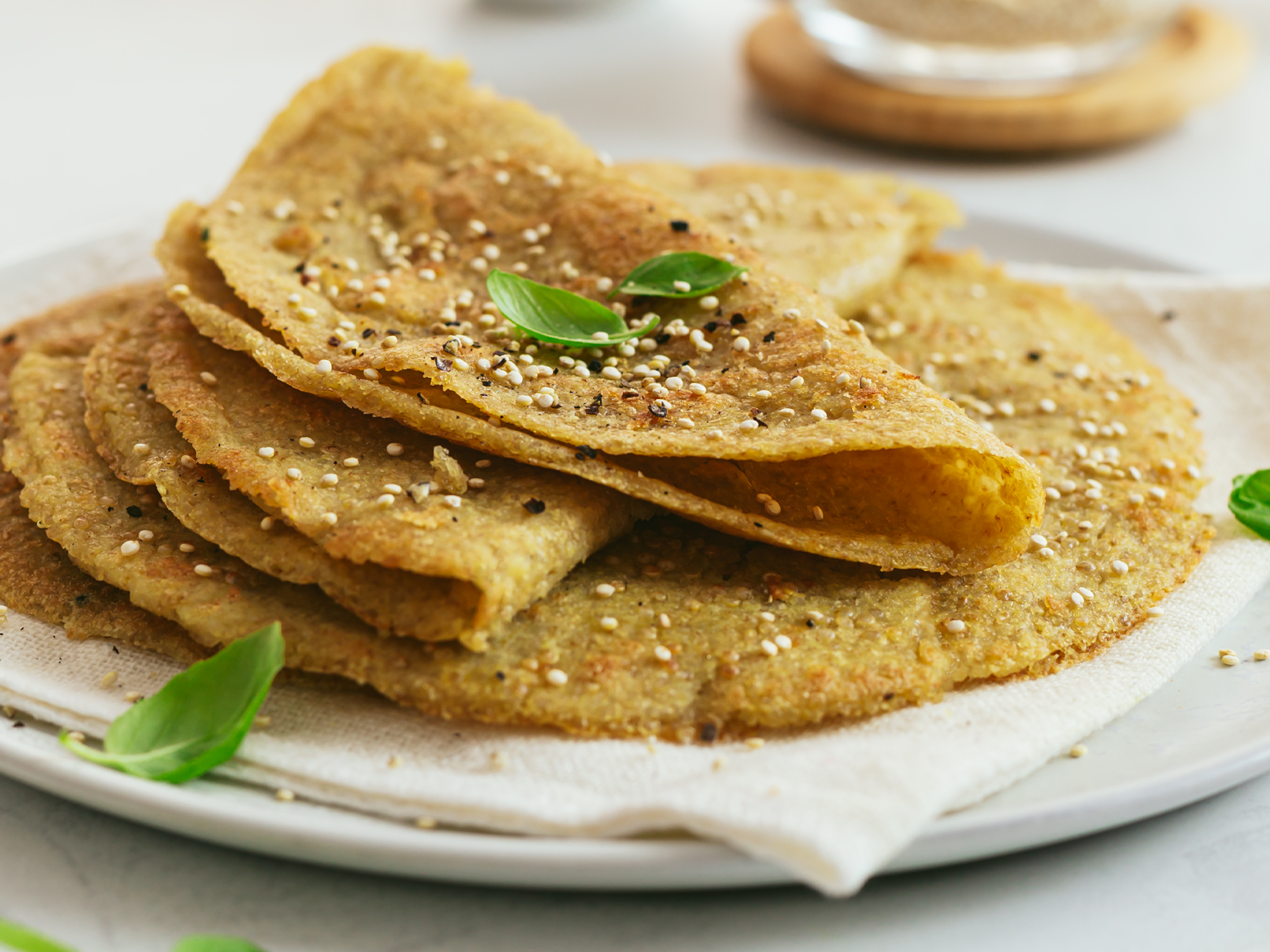Today we will show you how to make quinoa flatbread at home, from scratch.
After a lot of testing, we found a cheap, easy and quick way of getting a fluffy dough without using quinoa flour.
Now you can make delicious vegan and gluten-free flatbreads without worries and guesswork!
Quinoa flour is not always easy to find and quite tricky to make.
If you don't have a seed or coffee grinder machine, you have to grind the seeds by hand because a blender won't do the trick - we did it with a mortar and pestle, and it took us almost an hour.
We knew most of you wouldn't put up with this, so we tested a bread dough made using cooked quinoa.
This final test yielded better results and made the whole process faster and easier!
Other recipes out there bypass the cooking process. We tried it both ways and noticed that cooking quinoa first yielded softer and fluffier bread.
So why go through all this and not just make traditional flatbread?
There are two good reasons to prepare this recipe using quinoa instead of conventional flour:
Quinoa is a superfood — high in proteins, fibres, minerals and antioxidants. It is among the few plant-based foods to provide complete proteins - a most impressive trait - making it an essential addition to vegan diets. We talk more about this here.
Quinoa is gluten-free, so people sensitive to gluten can now enjoy flatbread topped with their favourite foods.
Moreover, quinoa is incredibly tasty.
All this results in nourishing vegan and gluten-free flatbreads to be enjoyed on their own or topped with other wholesome ingredients.
And what will you do with your steaming soft quinoa flatbreads? Stuff them, crisp them, or top them; the choice is yours!
Is quinoa flatbread gluten-free?
Our quinoa flatbread is indeed gluten-free. The quinoa seeds can be turned into fine flour or coarse meal and used to replace wheat flour in gluten-free cakes, biscuits and even bread.
Compared to other gluten-free flours, like rice or buckwheat, quinoa yields more nourishing and flavorful results.
The tiny seeds are a superfood, after all, and you can bring all their benefits into your bakes.
Making quinoa flour at home can be rather involved. In our flatbread recipe, we prepared a gluten-free dough using a cooked quinoa-based dough and devised a simplified process.
If you are into gluten-free baking and are looking for more flavour and nourishment than rice flour or buckwheat flour, then give quinoa a try. You won't be disappointed.
Quinoa bread vs wheat bread: which one is healthier?
For people on a gluten-free diet, quinoa flour can be a wholesome alternative to wheat flour to make bread.
Quinoa flour wins against plain white flour, whereas wholewheat flour puts up more of a fight and can be just as good for making bread, depending on your dietary needs.
Let's take a closer look at the data and see what makes one type of bread better than the other and why.
Here's how 100 grams of wholewheat flour stack against 100 grams of cooked quinoa - which we used to make our quinoa flatbreads - based on Healthline.com data.
Calories: Quinoa has 120 calories, while wholewheat has 340. Quinoa bread is better than wheat bread for a low-calorie diet.
Proteins: Quinoa has 4.4 grams of proteins against 13.2 grams for wholewheat. But the proteins from wholewheat come almost uniquely in the form of gluten - a compound harmful to celiacs - whereas quinoa proteins are complete. Proteins are "complete" if they comprise all the nine amino acids your body needs [1]. It is rare for plant-based food to provide complete proteins, which are instead common in animal products. Quinoa bread can be an excellent animal-proteins replacement in the vegan diet, and it's gluten-free.
Fibres: Wholewheat takes the lead on this nutrient, with 10.7 grams against 2.8 in quinoa. Therefore, wholewheat bread is a better source of fibres for people that tolerate gluten.
Glycemic Index: Quinoa has a glycemic index of 50 while commercially produced wholewheat bread hovers around 70. So quinoa bread is better for people with diabetes.
Let's draw some conclusions.
If you are on a vegan diet, then consider replacing wholewheat bread with quinoa bread for a better source of protein.
If you are on a gluten-free diet, then quinoa bread is the only suitable option here. Although there are many other types of gluten-free bread that you can enjoy, those made from quinoa flour will be more nourishing.
People with diabetes should opt for wholewheat over white bread, but quinoa bread is the better choice to keep blood sugar levels from spiking.
For everyone else, quinoa bread can be a flavourful alternative to the classic wholewheat loaf, but your body can benefit from eating both.
You should choose any of these two over white bread, whose plain flour was stripped of most fibres and nutrients.
Ingredients
| Raw Quinoa | 150 g |
| Water | 450 mL |
| Salt | 1/2 tsp |
| Extra Virgin Olive Oil | 2 tsp |
| Baking Powder | 1 tsp |
| Vegetable Oil (for greasing) | 2 tsp |
Step 1
Rinse and drain the raw quinoa thoroughly two or three times to remove the bitterness (1).
Then, add it to a pot, pour in the given amount of water, and stir in the salt (2).

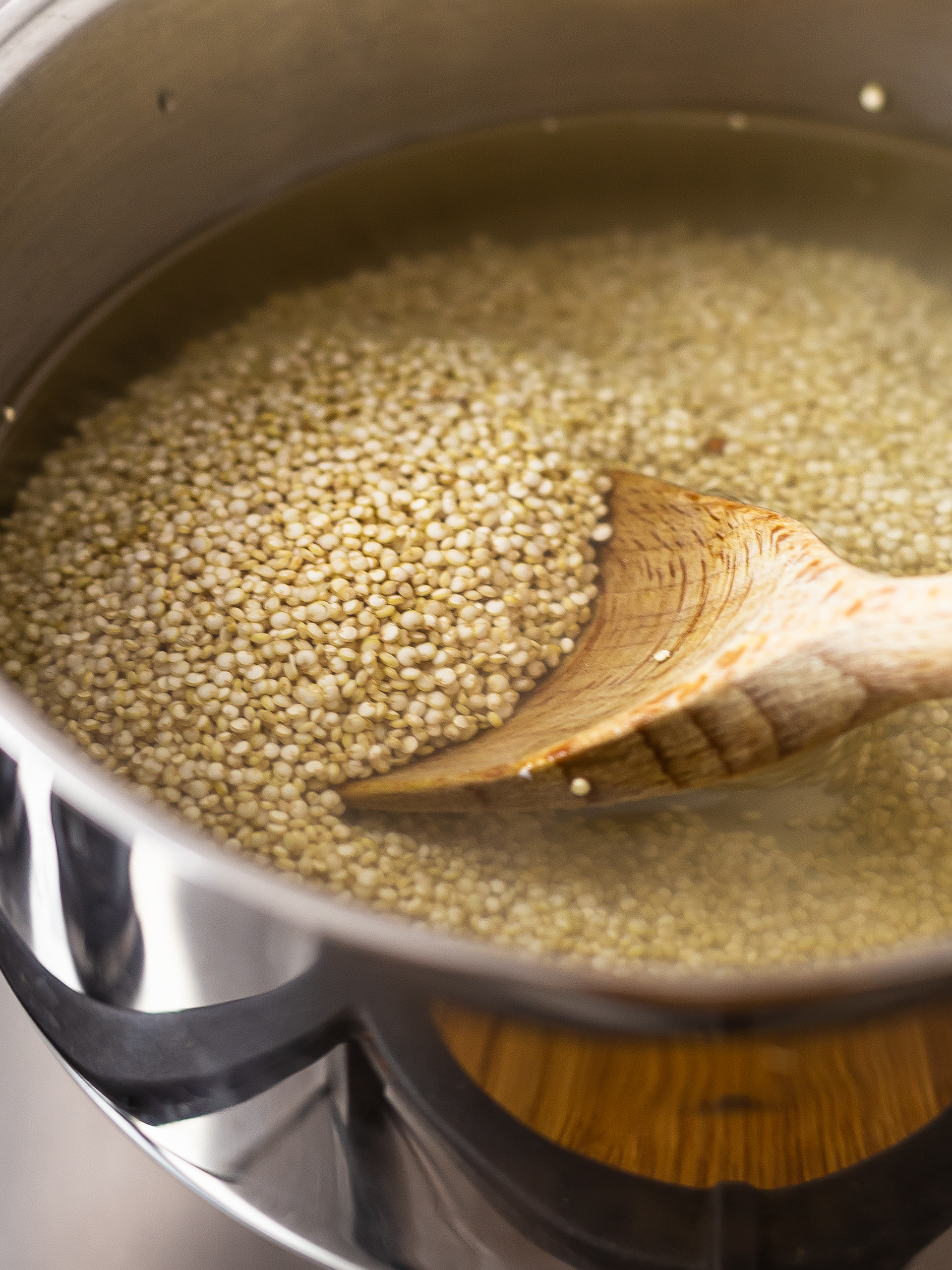
Step 2
Bring the water to a boil and simmer the quinoa covered for 15 minutes over medium-low heat.
Quinoa is ready when the grains are soft and all the water has been absorbed.
Remove from the heat and leave the quinoa to sit covered for 8 minutes to absorb any excess moisture.
Then, fluff up the grains with a fork or spoon.
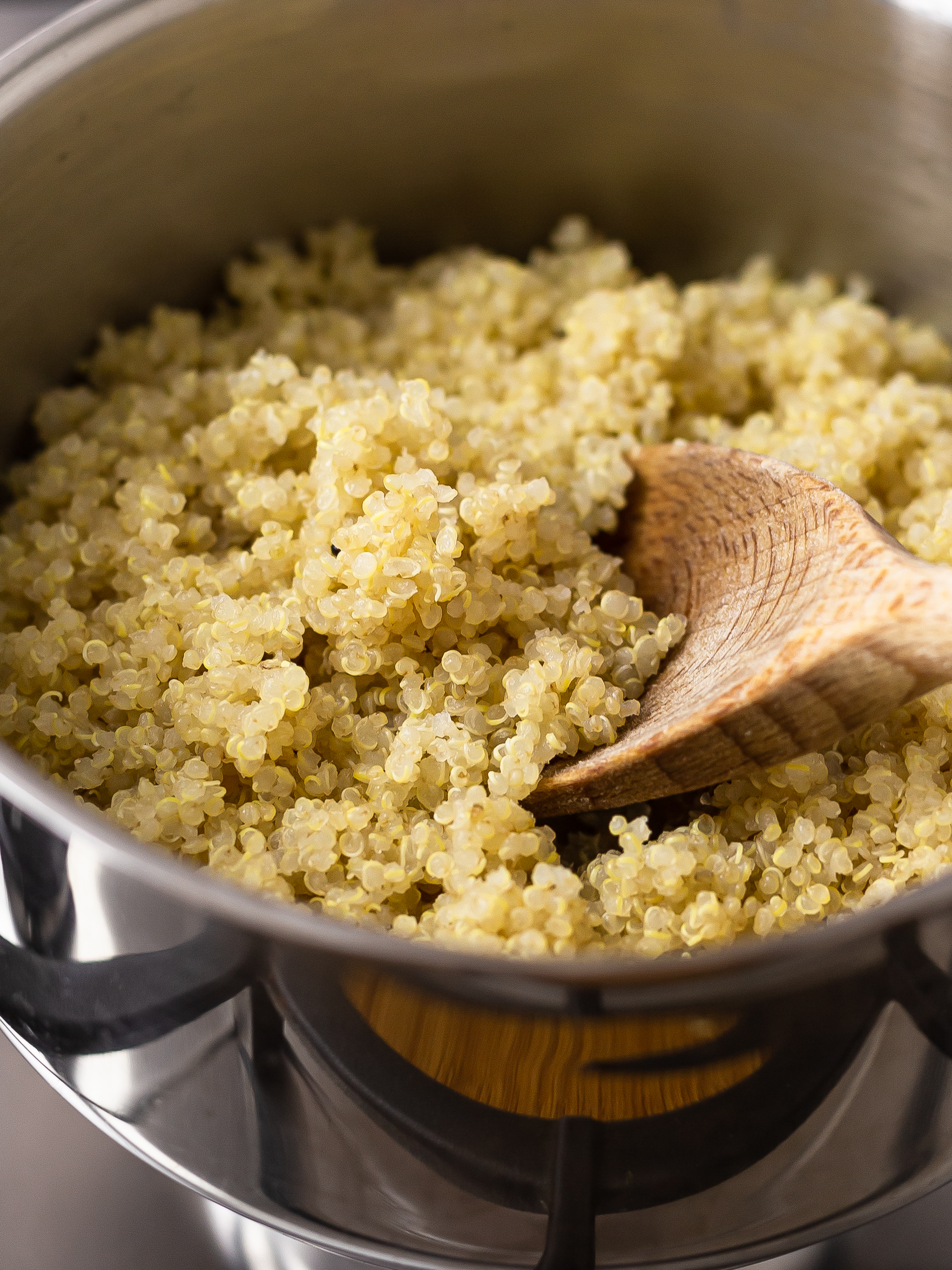
Step 3
Make sure the cooked quinoa is as dry as possible — so strain any excess water if needed.
Now, add the quinoa to a food processor with extra virgin olive oil and baking powder and blitz into a dough.
The flatbread dough should be dense, gluey and sticky.
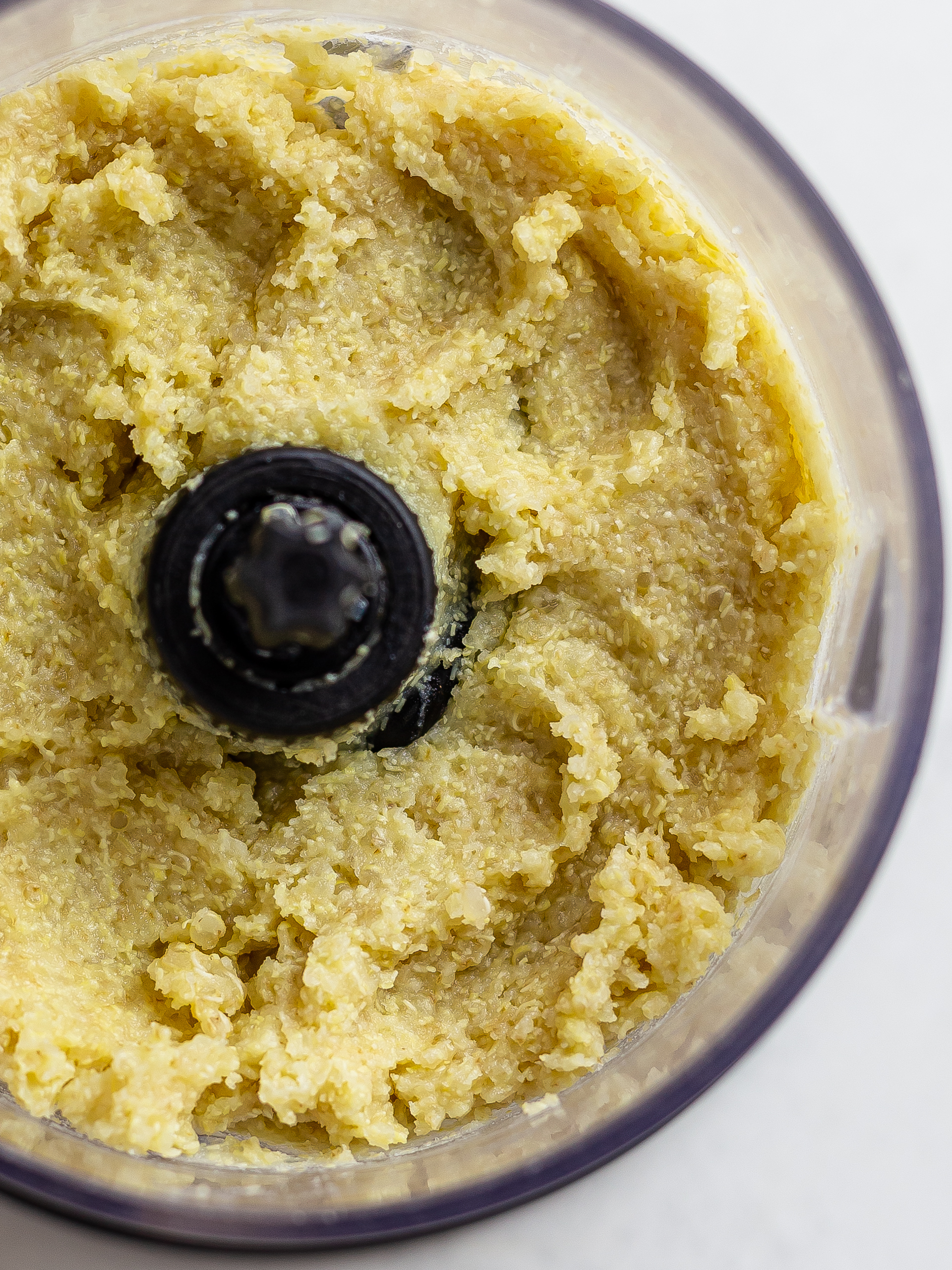
Step 4
Grease your hands with vegetable oil, transfer the quinoa bread dough to a bowl and work it until smooth and compact.
To make one flatbread, pinch off about 100/120 grams (3.5/4 oz) of quinoa dough and roll it into a smooth ball.
Keep the remaining dough covered so that it won't dry out.
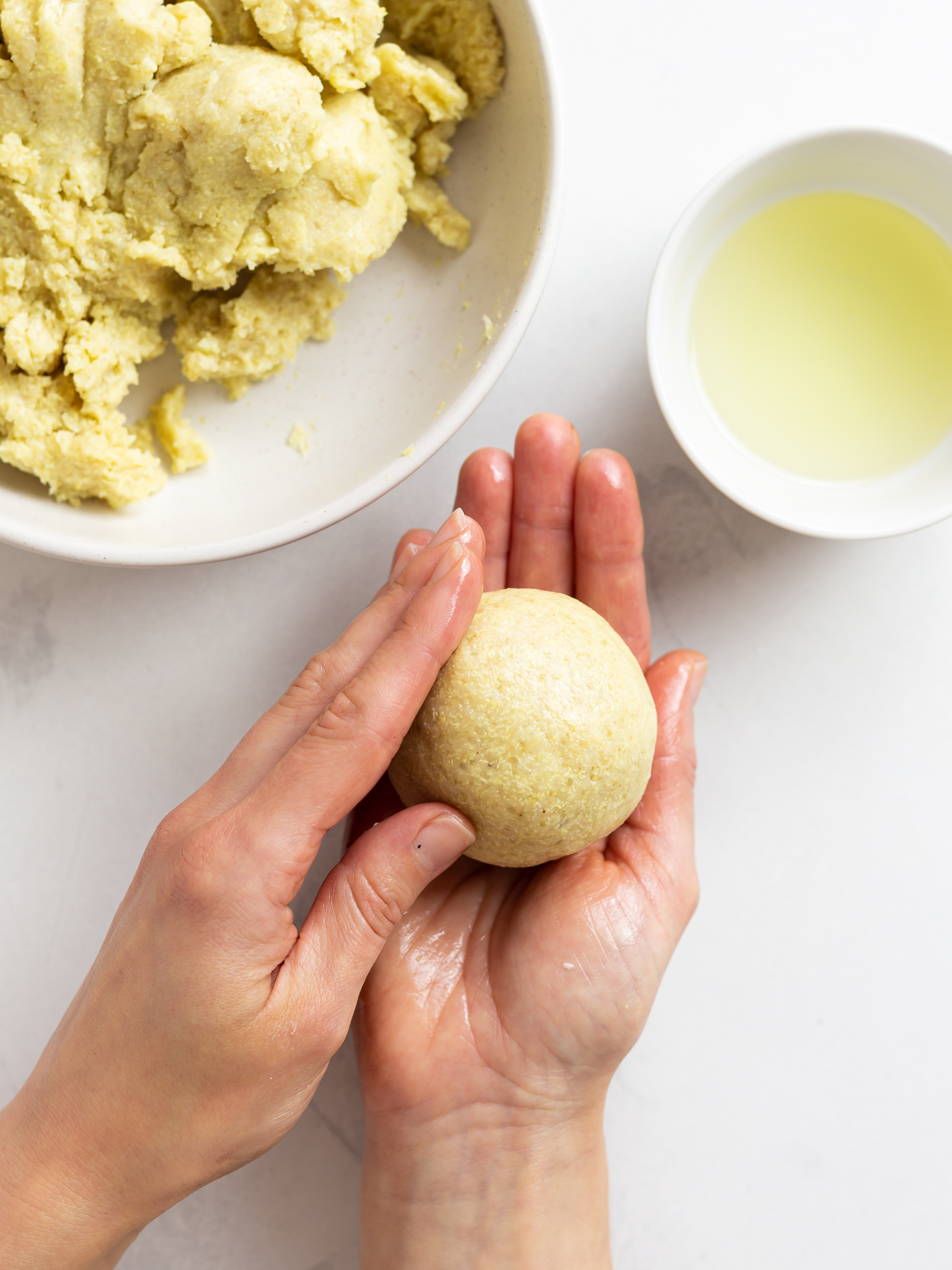
Step 5
Lightly grease a rolling pin and a sheet of baking paper.
Working over the baking paper, roll out the dough ball into a thin disc no more than 3 mm thick.
Then, use the rim of a bowl to cut out a round flatbread shape — we made ours 15 cm (6 inches) in diameter.
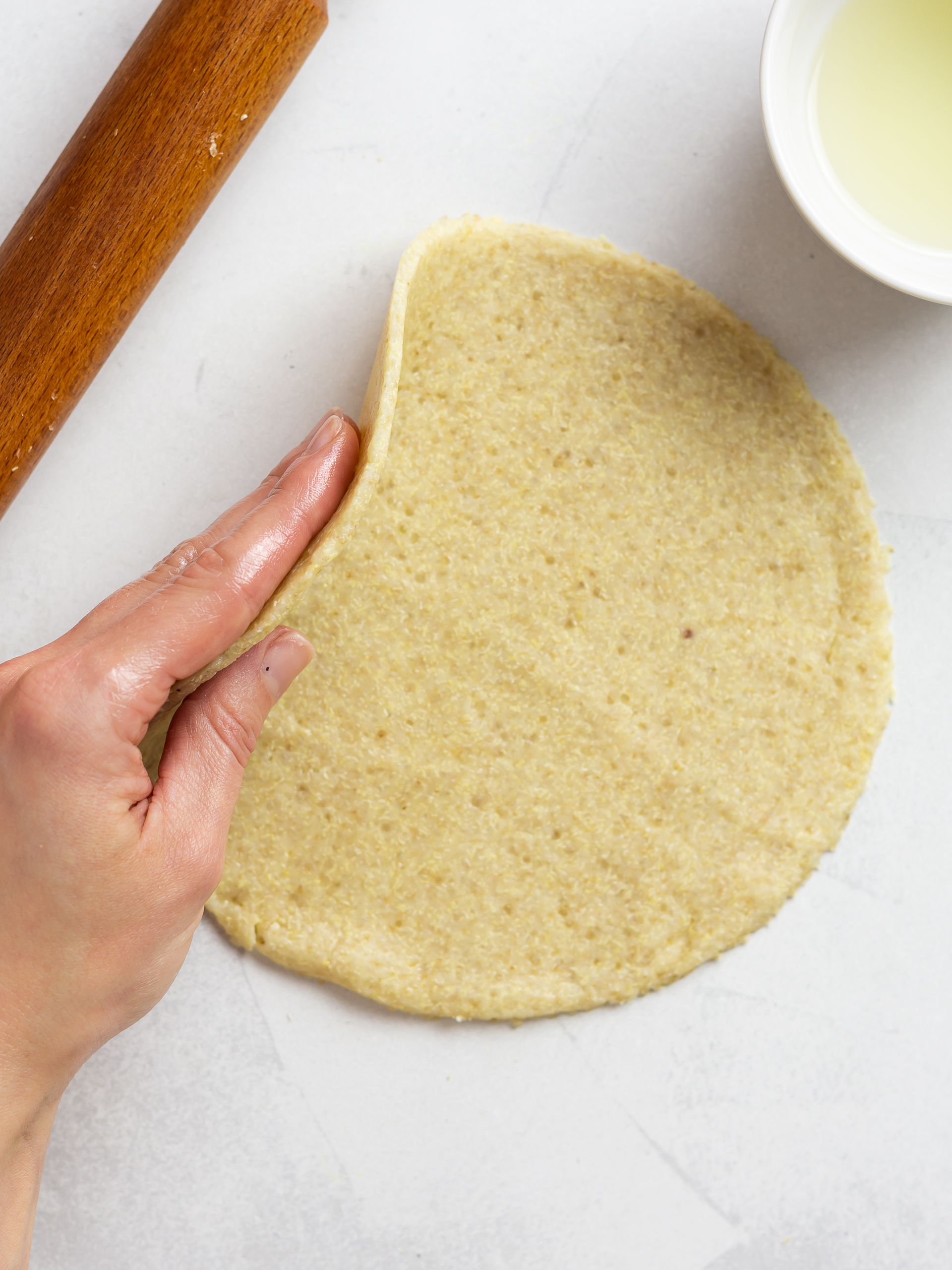
Step 6
Now, heat a skillet and lightly grease it.
Carefully peel the quinoa flatbread off of the baking paper and add it to the hot pan.
Cook for 3-4 minutes over medium heat, then gently flip it with the help of a spatula, and cook it for 2-3 more minutes.
For the oven-baked option, check the tips below.

Step 7
Let the cooked quinoa flatbread cool down for a minute on a rack, then wrap it in foil to keep it warm while you finish cooking the others.
Your homemade, gluten-free quinoa flatbreads are ready!
Enjoy them warm or toasted, with dips, toppings, or stuffings, and to accompany curries or salads.
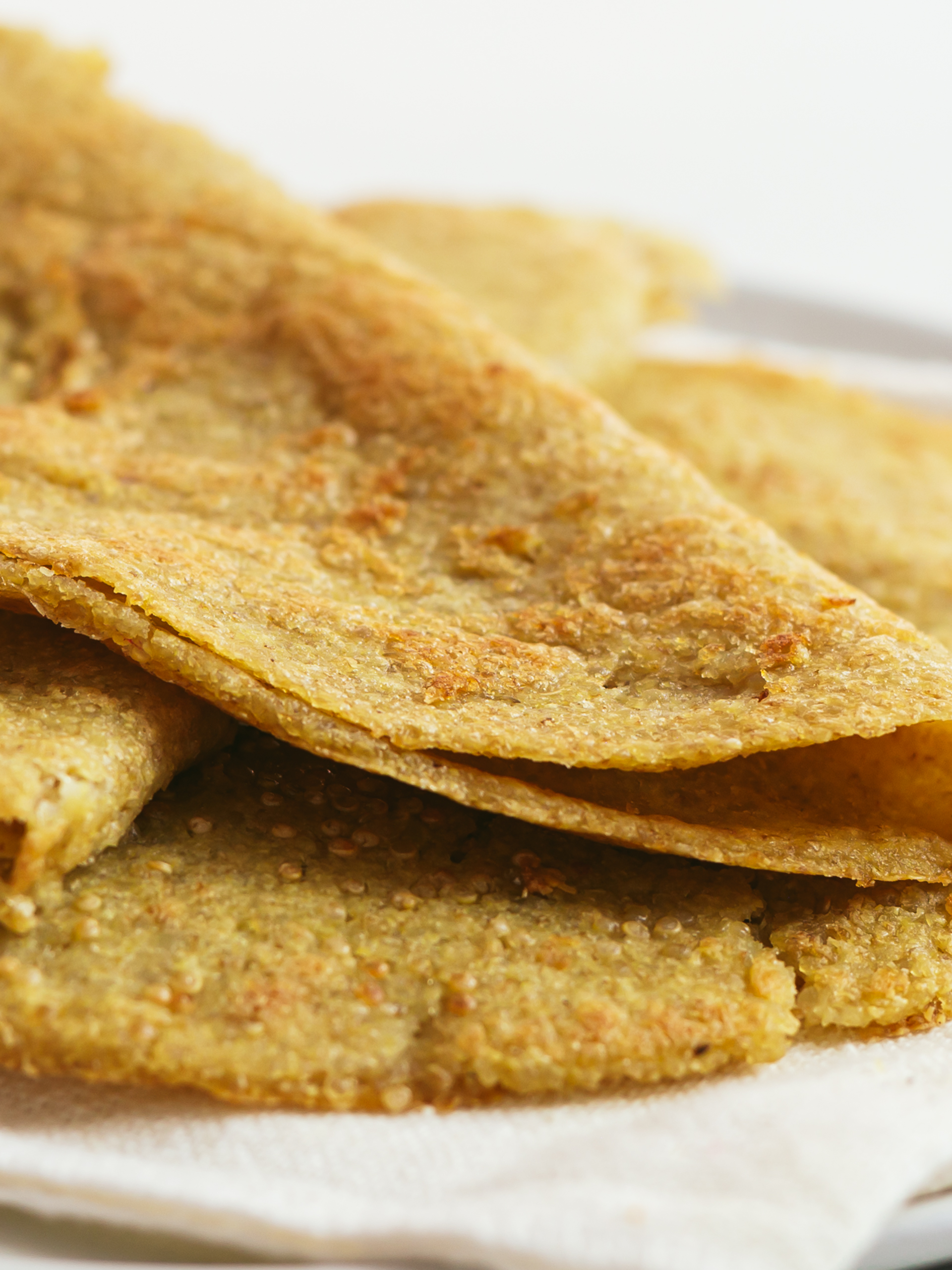
Tips
Cooked quinoa option
If you have leftover cooked quinoa from other recipes, you can use it to make these flatbreads.
Replace raw quinoa with cooked quinoa in a 1:2.8 ratio.
So, for example, you can swap 150 grams (5.3 oz) of raw quinoa with 420 grams (14.8 oz) of cooked quinoa to make 4 flatbreads.
Lightly warm the ready-cooked quinoa in the microwave before using it, as it'll be easier to blend into a dough.
Add-ins
Add crunchy seeds like flax, chia, or sesame seeds for extra flavour and nutrients. Use 1 teaspoon of seeds per flatbread, or more if you like. Mix them right into the quinoa bread dough or sprinkle them over the rolled flatbread, pressing them down with a rolling pin.
You can also season the dough with herbs and spices: try 1/2 teaspoon of garlic powder, curry powder, or ground cumin.
Oven-baked option
Line a baking tray with parchment paper, lightly grease it, and place the quinoa flatbreads.
Bake for 20 minutes at 200°C (390°F) static or at 180°C (355°F) fan.
To avoid cracking, wait for the pitas to cool down before you carefully lift them from the baking paper with a spatula.
How to store
Store the quinoa flatbreads wrapped in foil for 2-3 days in a cool, dry place like a cupboard. To eat, lightly warm them up in a skillet or toaster.
Like this recipe?
Try our gluten-free chapati bread next!
Or discover three other exciting ways to use cooked quinoa: homemade quinoa milk, cashew butter granola with quinoa, or protein quinoa chocolate muffins.
